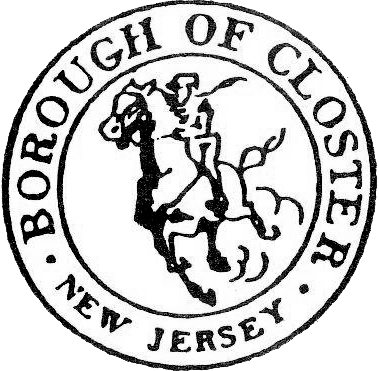Environmental Commission
The Closter Environmental Commission was created by the Mayor and Council in June, 1976, and may include up to seven regular members plus two alternate and two associate members. The Environmental Commission makes recommendations concerning open space preservation, water resources management; air pollution control; solid waste management; noise control; the protection of all trees, soil, and landscapes; protection of flora and fauna; and environmental appearances. It may conduct research into the use or potential use of open land areas of the Borough, and study and make recommendations concerning all of the Borough's parkland, preserves and natural open space.
The Environmental Commission oversees the passive recreation sites and parkland in Closter (see links below). In addition, applications to the Planning Board and the Zoning Board of Adjustment are reviewed by the Environmental Commission, as appropriate. See the Borough of Closter Code Chapter 16: Environmental Commission for more information.
The Commission holds annual Closter Cleanup Days and other events and activities throughout the year, which are posted on the Borough's social media sites: Closter Facebook Page , Closter on Twitter and Closter on Instagram .
Environmental Commission Member Roster
Commission Meetings are held on the second Thursday of every month at 7:30 PM in Borough Hall or on Zoom (check the Borough main page) and are open to the public.
For information on Borough owned trees, located in public right-of-way, please see the Shade Tree Commission site.
For information on the five Borough "active parks" with ballfields and tennis courts, see the Recreation Commission site .
Let’s Get Outdoors in Closter!
Borough Sites and Parks (Closter ecode §142-1)
Other Topics of Interest
Pollinator Gardens and Landscaping with Native Plants
Visit Jersey Yards website for information on reducing/rethinking lawns and gardens, and a list of NJ Native Plants you can filter to your needs
Visit Snetsinger’s Garden website for information on butterfly gardens, sample garden designs, and other useful information on planting with Native Plants
Visit Native Plants for the Small Yard by Kate Brandes on the Lehigh Gap Nature Center site
NJ’s Plastic Bag Ban: effective May 4, 2022; find out more at Bag Up NJ
Recommended Tree List
Tree Species Suitable for Replacement on Private Property
PLEASE NOTE: hyperlinks are provided for image reference only
SHADE TREES (larger variety, tall-growing trees) | ORNAMENTAL (smaller variety, suitable for planting within 20 feet of an overhead power line) |
|---|---|
Acer rubrum | Acer negundo |
Acer saccharum | Aesculus pavia |
Betula nigra – Single Stem | Amelanchier Levis ‘snowflakes' Shadblow Single Stem |
Celtics occidentalis | Carpinus caroliniana |
Liquidambar styraciflua ‘Hapdel’ (Happidaze Sweet Gum) | Cercis canadensis |
Lirodendron “Emerald City” | Craetagus crus-galli |
Magnolia acuminata | Lirodendron ‘little volunteer’ |
Nyssa sylvatica | Ostrya virginiana |
Quercus alba | Prunus okame |
Quercus bicolor | Prunus yedoensis |
Quercus coccinea | Styrax japonica |
Quercus imbricaria | Syringa reticulata |
Quercus palustris | Zelkova serrata |
Tilia americana | Zelkova serrata |
Ulmus americana DED resistant cultivars |
|
Ulmus parviflora |
|
Zelkova serrata |
